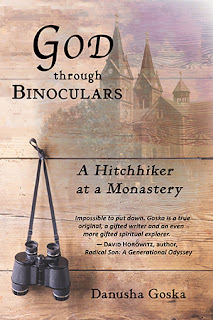 |
| I can't find a source for this photo |
The New York Times recently published two anti-Semitic cartoons.
Pruchnik, a small, remote village in Poland, staged a custom called "Judas beating." This custom is also carried out in Mexico, Brazil, Greece, the Philippines, and other places.
Here's one difference in the condemnations that followed: the Pruchnik custom was used by outlets big and small to insist that Poles are essential anti-Semites. "It's in their genes," as many said. "They are Nazi scum," many said.
I didn't see any news outlets or organizations reaching out to Pruchnik itself, to dialogue with the villagers there. "What are you thinking? What is the purpose of this event? Are you a Nazi? If we could tell you how inflammatory this custom is, would you be willing to change it?" Just the beginning of the questions one might ask. I didn't see anyone ask them.
No. Coverage didn't exist to make the world a better place. Coverage existed to smear all Poles as essential anti-Semites and Nazi scum. If you didn't go along with that, you were ... an essential Polish anti-Semite and Nazi scum.
The New York Times, on the other hand is a far more powerful entity than the villagers of Pruchnik can ever hope to be. And the New York Times was offered, and accepted, a chance to explain itself. It does so in Bret Stephens' April 28 column.
It was just one editor, Stephens explains. We withdrew the cartoon. We aren't anti-Semites. The people who published the cartoon aren't anti-Semites, just ignorant of anti-Semitism. The anti-Semitism of the cartoon was "undetectable" to the editor who approved it.
Well this sounds like hogwash to me. But at least he's trying.
My guess is that Pruchnik villagers would say something very like what the Times is saying. "We aren't anti-Semites ... this is about Judas, not all Jews ... it's an old custom ... " And, as part of a respectful dialogue, concerned outsiders could educate those few who planned this event on why what they are doing is a bad thing, and, incidentally, an international disaster for Poland.
The New York Times gets that chance. The Polish villagers of Pruchnik have not been given that chance. And they won't be. Because those covering this event, from the two Facebook friends whose friendship is lost, to too many outlets and organizations, didn't choose respectful dialogue with the participants in the custom -- who, it must be mentioned, were overwhelmingly *children* who could have no understanding of the implications of their action. No. Those talking about Pruchnik were not so much covering it as exploiting it, in a manner that simply furthered the stereotyping of Poles.

























